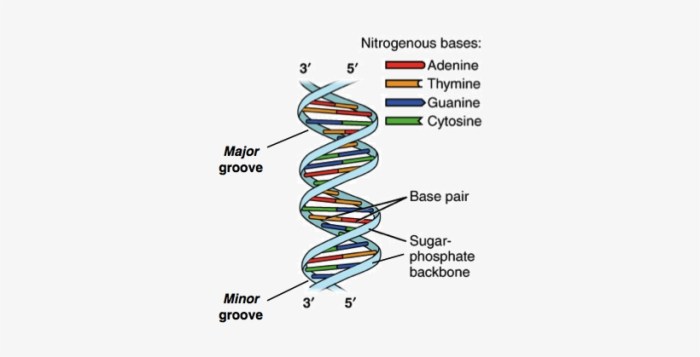Embark on an enlightening journey with our comprehensive six kingdoms coloring worksheet answer key. Dive into the fascinating world of biology as we unravel the intricate details of each kingdom, fostering a deeper understanding of the incredible diversity of life on Earth.
Through interactive coloring worksheets and thought-provoking discussions, this guide will empower you to grasp the fundamental characteristics of each kingdom, unravel the rationale behind their classification, and uncover the captivating connections that weave the tapestry of life together.
Kingdom Classification
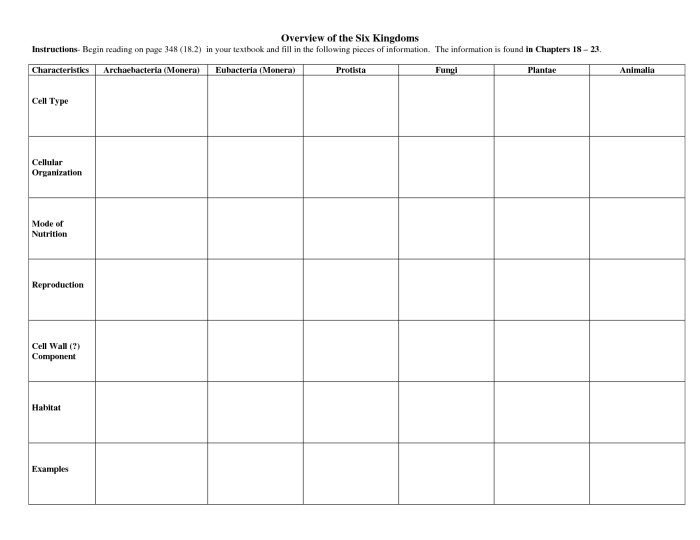
The six kingdoms of living organisms are:
- Bacteria
- Archaea
- Protista
- Fungi
- Plantae
- Animalia
Each kingdom has its own unique characteristics that distinguish it from the others.
Bacteria
Bacteria are single-celled prokaryotes, meaning they lack a nucleus or other membrane-bound organelles. They are the most abundant organisms on Earth and can be found in a wide variety of habitats, from the depths of the ocean to the human body.
Archaea
Archaea are also single-celled prokaryotes, but they are more closely related to eukaryotes than to bacteria. They are found in extreme environments, such as hot springs and deep-sea vents.
Protista
Protista are eukaryotic organisms that are not plants, animals, or fungi. They include a wide variety of organisms, such as algae, protozoa, and slime molds.
Fungi, Six kingdoms coloring worksheet answer key
Fungi are eukaryotic organisms that are heterotrophic, meaning they cannot make their own food. They absorb nutrients from their surroundings through their hyphae, which are thread-like structures.
Plantae
Plantae are eukaryotic organisms that are autotrophic, meaning they can make their own food through photosynthesis. They have cell walls made of cellulose and contain chlorophyll, a green pigment that absorbs light energy.
Animalia
Animalia are eukaryotic organisms that are heterotrophic and have the ability to move. They have a variety of body plans and can be found in a wide variety of habitats.The six kingdoms of living organisms are classified based on their cell structure, mode of nutrition, and mode of locomotion.
Kingdom Comparison
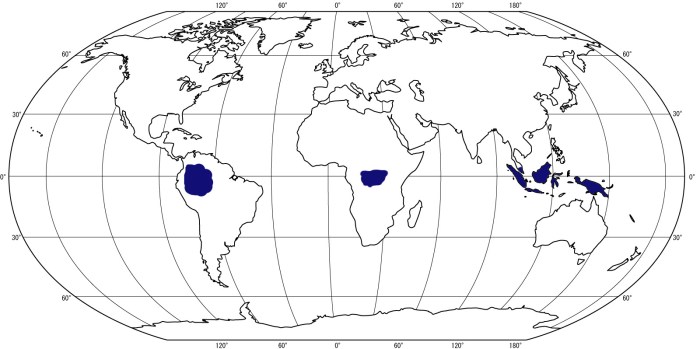
The following table compares the six kingdoms of living organisms based on their characteristics:| Kingdom | Cell Structure | Mode of Nutrition | Mode of Locomotion ||—|—|—|—|| Bacteria | Prokaryotic | Autotrophic or heterotrophic | None || Archaea | Prokaryotic | Autotrophic or heterotrophic | None || Protista | Eukaryotic | Autotrophic or heterotrophic | Varies || Fungi | Eukaryotic | Heterotrophic | None || Plantae | Eukaryotic | Autotrophic | None || Animalia | Eukaryotic | Heterotrophic | Varies |The similarities between the kingdoms include:
- All living organisms are made up of cells.
- All living organisms have DNA.
- All living organisms need energy to survive.
The differences between the kingdoms include:
- Prokaryotic organisms do not have a nucleus or other membrane-bound organelles, while eukaryotic organisms do.
- Autotrophic organisms can make their own food, while heterotrophic organisms cannot.
- Some organisms can move, while others cannot.
There are some trends and patterns in the data. For example, all prokaryotic organisms are single-celled, while all eukaryotic organisms are multicellular. All autotrophic organisms have chlorophyll, while all heterotrophic organisms do not. All organisms that can move have some form of muscle or cilia.
Kingdom Activities
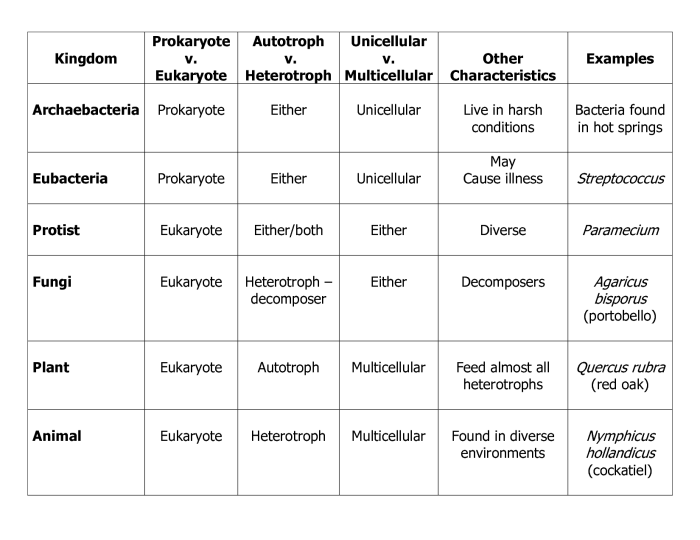
One hands-on activity that demonstrates the characteristics of the six kingdoms is to create a model of each kingdom. Students can use different materials to represent the different characteristics of each kingdom. For example, they can use clay to represent the cell wall of a plant, or they can use fabric to represent the hyphae of a fungus.Another
activity is to have students create a presentation about one of the six kingdoms. Students can research the kingdom and its characteristics, and then they can create a presentation that includes information about the kingdom’s cell structure, mode of nutrition, and mode of locomotion.
Kingdom Projects: Six Kingdoms Coloring Worksheet Answer Key
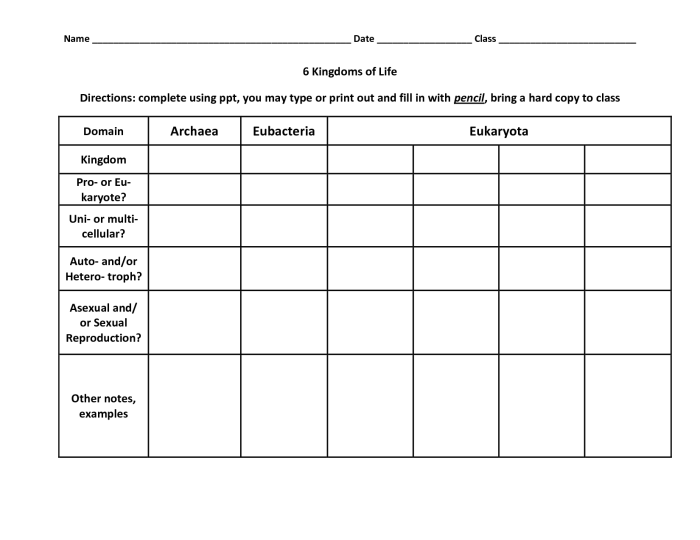
One group project that students can do is to create a presentation about one of the six kingdoms. Students can work together to research the kingdom and its characteristics, and then they can create a presentation that includes information about the kingdom’s cell structure, mode of nutrition, and mode of locomotion.Students
can also create a model of one of the six kingdoms. They can use different materials to represent the different characteristics of the kingdom. For example, they can use clay to represent the cell wall of a plant, or they can use fabric to represent the hyphae of a fungus.
FAQ Section
What are the six kingdoms of living organisms?
The six kingdoms are Animalia, Plantae, Fungi, Protista, Archaea, and Bacteria.
What is the basis for classifying organisms into different kingdoms?
Organisms are classified into different kingdoms based on their cell structure, mode of nutrition, and mode of reproduction.
How can I use the six kingdoms coloring worksheet to learn about the six kingdoms?
The six kingdoms coloring worksheet can be used to learn about the six kingdoms by matching the different colors to the different kingdoms.
